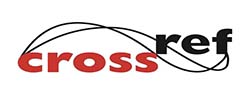Author: Akbar Saitama, Akbar Hidayat Zaini, Eggy Akhmad Armandoni
![]() DOI: 10.22161/ijeab.84.8
DOI: 10.22161/ijeab.84.8
Keyword: Acid–base Titration, Total Dissolved Solids, Light Intensity.
Abstract: Tomatoes are one of horticultural commodities which have many benefits for the community, including spices, fruits and vegetables. Tomato cultivation techniques using fruit shade and thinning can be done to overcome the constraints of the mismatch between the quality of products produced by farmers and the quality of products desired by community. Shade has a function to create environmental conditions in accordance with plant conditions, while fruit thinning has a function to maximize the results of photosynthesis so that it can improve the quality of tomatoes. This study aimed to determine the effect of shade and thinning on the result and quality of tomatoes. The study was conducted from January to May 2022 in the Malang, East Java. This research used a Completely Randomized Design with Nested Pattern which consisted of 12 treatments with 3 replications, so that from 36 units of combination treatment. The treatment used was a combination of the use of fruit shade (0,25 and 50%) and thinning intensity (0,3,4 and 5). The analysis of the data used was the F level test of 5%. If the 5% F test had a significant effect, then it was followed by a 5% HSD test. The results showed that the use of fruit shade and thinning significantly affectd the parameters of flower emergence, fruit weight per hectare, fruit weight per fruit, fruit volume, fruit diameter, and no significant effect on the parameters of total dissolved solids.
Article Info: Received: 25 Jun 2023; Received in revised form: 17 Jul 2023; Accepted: 25 Jul 2023; Available online: 03 Aug 2023
| Total View: 459 | Downloads: 707 | Page No: 063-068 |
Cite this Article:
MLA
Akbar Saitama, Akbar Hidayat Zaini, Eggy Akhmad Armandoni, P.(2023).Effect of Shade and Thinning on Yield and Chemical Content of Tomato (Lycopersicum esculentum Mill.). International Journal of Environment Agriculture and Biotechnology(ISSN: 2456-1878).8(4), 063-068.10.22161/ijeab.84.8
Akbar Saitama, Akbar Hidayat Zaini, Eggy Akhmad Armandoni, P.(2023).Effect of Shade and Thinning on Yield and Chemical Content of Tomato (Lycopersicum esculentum Mill.). International Journal of Environment Agriculture and Biotechnology(ISSN: 2456-1878).8(4), pp.063-068.
Akbar Saitama, Akbar Hidayat Zaini, Eggy Akhmad Armandoni. 2023."Effect of Shade and Thinning on Yield and Chemical Content of Tomato (Lycopersicum esculentum Mill.)". International Journal of Environment Agriculture and Biotechnology(ISSN: 2456-1878).8(4):063-068.Doi:10.22161/ijeab.84.8
Akbar Saitama, Akbar Hidayat Zaini, Eggy Akhmad Armandoni."Effect of Shade and Thinning on Yield and Chemical Content of Tomato (Lycopersicum esculentum Mill.)", International Journal of Environment Agriculture and Biotechnology,vol.8,no. 4, pp.063-068,2023.
@article { akbarsaitama2023effect,
title={Effect of Shade and Thinning on Yield and Chemical Content of Tomato (Lycopersicum esculentum Mill.)},
author={Akbar Saitama, Akbar Hidayat Zaini, Eggy Akhmad Armandoni , R},
journal={International Journal of Environment Agriculture and Biotechnology},
volume={8},
year= {2023} ,
}
























